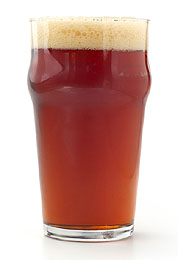 Bitter is the term given to a category of English pale ales, named for their relative bitterness compared to the English mild ale. Though they’re called bitter, they’re no more so than your average American pale ale. Ideally, English bitter ales should be session-able. Imagine drinking them in rounds at the local pub.
Bitter is the term given to a category of English pale ales, named for their relative bitterness compared to the English mild ale. Though they’re called bitter, they’re no more so than your average American pale ale. Ideally, English bitter ales should be session-able. Imagine drinking them in rounds at the local pub.
The bitter ales tend to be categorized by their original gravity. “Ordinary bitter” or simply “bitter” refers to the lowest gravity ales. These are ideal for a long day of drinking at the local watering hole. Stronger versions may be called “special” or “best bitter”. Finally, many American drinkers will recognize the name ESB, or Extra Special Bitter. The classic example is Fuller’s ESB (OG: 1.054), and many American brewers have adopted the term for their own English-style pale ales.
Though the naming convention is somewhat loosely defined in the UK, the BJCP has put some guidelines in place to give homebrewers and homebrew judges a framework for comparison. As you can see, gravities and IBUs, tend to increase as we move up the scale:
- 8A. Standard/Ordinary Bitter: OG: 1.032 – 1.040, FG: 1.007 – 1.011, IBUs: 25-35, ABV: 3.2% – 3.8%, SRM: 4 – 14
- 8B. Special/Best/Premium Bitter: OG: 1.040 – 1.048, FG: 1.008 – 1.012, IBUs: 25 – 40, ABV: 3.8 – 4.6%, SRM: 5 – 16
- 8C. Extra Special/Strong Bitter (English Pale Ale): OG: 1.048 – 1.060, FG: 1.010 – 1.016, IBUs: 30 – 50, ABV: 4.6 – 6.2%, SRM: 6 – 18
Ingredients
- Water – Many English pale ales are brewed with relatively hard water, which help give the hops a little “pop”. If you know you have soft water, consider adding some calcium sulfate, also known as gypsum, to your mash water.
- Malt – English pale ale malt, such as Munton’s, should form the base of the grain bill (~90%). Munton’s also make a very good light malt extract. Adding some Victory or Vienna malt will bring in some toasted flavors and a pound of Caramel 40L malt will be plenty to give your beer a touch of caramel sweetness and golden to amber color. Some brewers will use sugar to increase gravity and to impart a dry finish.
- Hops – Kent Goldings is the classic hop for English pale ales. With aromas of citrus and spice it does very well in late additions. Fuggles is another popular English variety, and tends to be more earthy and woody. Bitter ales are sometimes dry-hopped.
- Yeast – The fruity esters derived from a classic English yeast strain are desirable. Safale-S04 is an excellent dry ale yeast.
- Priming – The English are famous for what is known as “Real Ale” — beer that is cask conditioned and naturally carbonated (as opposed to force carbonating under CO2 pressure). To the American palate, cask conditioned ales seem somewhat warm and flat — that’s the way it’s supposed to be! Homebrewers who bottle get a similar effect by using just 1/2 cup priming sugar in a five-gallon batch.
E.S.B. Partial Mash Recipe (from Homebrewing for Dummies):
“1-4-U, 2-4-ME S.B.”
6 lbs. Munton and Fison malt extract
1 lb. 40L crystal malt
.5 pound Victory malt
1 cup brown sugar
2 oz. Kent Goldings @ :60
1 oz. Kent Goldings @ :15
1 tsp. Irish Moss
Primary fermentation for 8 days at 65F
Secondary fermentation for 10 days at 65F
Yeast: Wyeast 1968 / London ESB Ale
**Tips: Prepare a yeast starter and dry hop with an extra ounce if Kent Goldings if desired.
Do you have a favorite bitter ale homebrew recipe? Share in the comments below!
———————————————————————————————————–
David Ackley is a beer writer, brewer, and self-described “craft beer crusader.” He holds a General Certificate in Brewing from the Institute of Brewing and Distilling and is founder of the Local Beer Blog.
